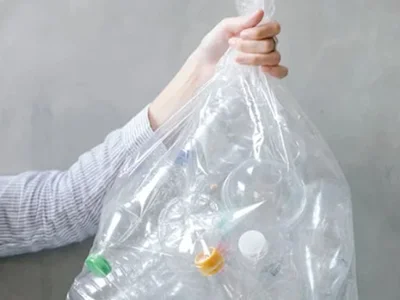The 30-Second Trick For Reclaim Waste
The 30-Second Trick For Reclaim Waste
Blog Article
Reclaim Waste for Beginners
Table of ContentsWhat Does Reclaim Waste Mean?Rumored Buzz on Reclaim WasteThe smart Trick of Reclaim Waste That Nobody is Talking AboutWhat Does Reclaim Waste Mean?Facts About Reclaim Waste Uncovered
Check out the types, events, and types of liquid waste. Residential sewer waste describes the waste and items from a domestic septic system. This type of waste is developed by people in houses, colleges, and other buildings. This only consists of septic systems that have a drain field. The proper management and disposal of domestic sewer waste need fluid waste to be transferred to a sewer treatment plant where the appropriate methods and devices are applied to cleanse and get rid of waste.
Business waste commonly includes prospective threats, such as combustible materials or a mixture of liquid and strong waste items, and requires an advanced and detailed disposal process. The disposal of commercial waste generally entails the filtering of waste before transport to guarantee risk-free and appropriate disposal. Hazardous waste is created from byproducts and drainage of industrial processes and production.
This type of waste can not utilize the exact same sewer monitoring transport or processes as septic or industrial liquids. The industrial waste administration process calls for the evaluation and screening of fluid waste prior to it undergoes the disposal process (industrial wastewater treatment). Overflow waste is the fluid waste that comes from drainage and excess stormwater in very inhabited areas or cities
Drainage waste can create contamination and flooding if not dealt with correctly. Discover more concerning sewer cleansing and waste administration. Making certain appropriate waste administration can avoid catastrophes and reduce environmental damage. Both individuals in residential settings and professionals in industrial or production sectors can profit from understanding the processes and guidelines of liquid waste administration.
The Greatest Guide To Reclaim Waste
Contact PROS Services today to learn more about our waste administration and disposal services and the correct methods to look after the liquid waste you produce.
(https://moz.com/community/q/user/reclaimwaste1)This so-called 'wastewater' is not only an essential resource yet, after treatment, will certainly be released to our land, rivers or the sea. Used water from bathrooms, showers, baths, cooking area sinks, laundries and commercial processes is recognized as wastewater.

water used to cool down machinery or tidy plant and tools). Stormwater, a form of wastewater, is overflow that streams from agricultural and urban locations such as roof coverings, parks, gardens, roadways, courses and rain gutters right into stormwater drains, after rain. Stormwater streams without treatment directly to local creeks or rivers, ultimately getting to the ocean.
The 20-Second Trick For Reclaim Waste
In click to read more Queensland, a lot of wastewater is treated at sewage treatment plants. Wastewater is transported from domestic or industrial websites with a system of sewers and pump terminals, recognized as sewerage reticulation, to a sewer treatment plant.
The Division of Natural Resources suggests city governments concerning handling, operating and keeping sewage systems and therapy plants. In unsewered areas, neighborhood governments might call for householders to mount specific or home sewer therapy systems to deal with domestic wastewater from commodes, kitchen areas, shower rooms and laundries. The Department of Natural Resources authorises making use of household systems when they are shown to be effective.
Most stormwater receives no therapy. In some new subdivisions, therapy of some stormwater to remove trash, sand and crushed rock has started utilizing gross pollutant catches. Wastewater treatment occurs in 4 phases: Removes solid matter. Bigger solids, such as plastics and various other items wrongly released to sewers, are eliminated when wastewater is travelled through screens.
Wastewater then streams right into big containers where solids resolve and are removed as sludge. Oil and scum are skimmed from the surface. Utilizes small living organisms recognizes as micro-organisms to damage down and remove continuing to be dissolved wastes and fine particles. Micro-organisms and wastes are incorporated in the sludge. Eliminates nitrogen and phosphorus nutrients that could trigger algal blooms in our waterways and intimidate water life.
Our Reclaim Waste Ideas
Nutrient removal is not available at all sewage therapy plants since it requires pricey specialist devices. Clear liquid effluent produced after therapy might still contain disease-causing micro-organisms - liquid waste removal melbourne.

This usually implies wastewater has actually to be treated or contaminants removed before it can be discharged to rivers. The majority of wastewater moves into the sewerage system. Under the Act, city governments administer approvals and licences for eco pertinent activities (ERAs) including wastewater launches that could have a regional impact. The department carries out authorizations and permits to ERAs involving wastewater releases that may have a regional or statewide influence.
Some Ideas on Reclaim Waste You Should Know
Or else, samples are taken for laboratory evaluation. Commonly many tests are needed to establish the degrees of each of the different contaminants such as oils, heavy metals and chemicals in water. Surveillance gives valid information regarding water quality and can verify that licence conditions are being met. The details gotten via surveillance gives the basis for making water top quality decisions.
Report this page